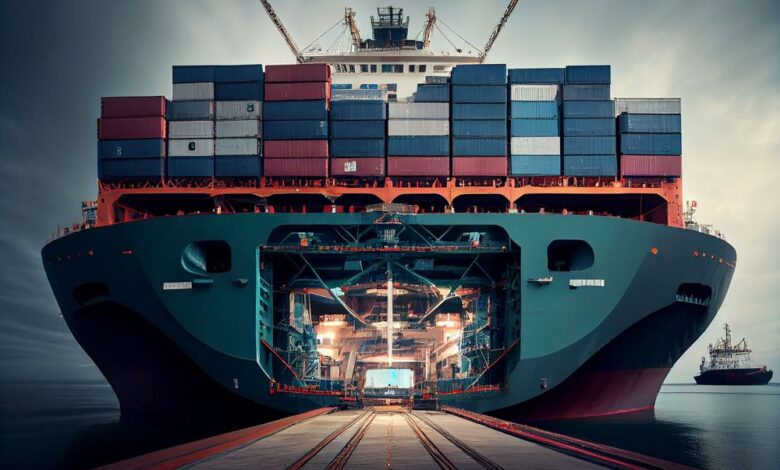Container Shipping Sector Steers Through Geopolitical Storms

The container shipping industry is currently sailing through a period of significant turbulence, as geopolitical tensions and market dynamics create a challenging environment for carriers worldwide. The sector, which has seen its fair share of ebbs and flows in revenue and profitability, is now preparing for the release of fourth-quarter financial results for the year 2023. These results are anticipated to mirror the industry’s struggle to maintain balance amidst the shifting tides of transport supply and cargo demand.
Preliminary figures from China’s Cosco, the world’s fourth-largest liner operator, have revealed a stark downturn in net income for the final quarter of 2023. The company has reported a 62% decrease from the previous quarter and a 79% drop from the second quarter of the same year. This decline, the company’s profits for the entire year of 2023 have remained significantly higher than those recorded before the pandemic in 2019.
A subsidiary of Cosco, OOCL, has also experienced a decline in revenue per container. The global average revenue per forty-foot equivalent unit (FEU) dipped to $1,732 in the fourth quarter, marking an 8.2% decrease from the third quarter and an 18.5% reduction from the second quarter. The Asia-Europe trade lane, in particular, witnessed a substantial 14.9% fall in revenue per FEU compared to the third quarter. This figure is the lowest since the second quarter of 2018 and represents a 3% decrease from the fourth quarter of 2019, underscoring the persistent challenges within the industry.
Taiwanese carriers, including Evergreen, Yang Ming, and Wan Hai, have also reported their monthly revenues. The data for December indicated a downward trend for Evergreen and Yang Ming, while Wan Hai’s revenue remained consistent with the previous quarter. Notably, Yang Ming’s December revenue was at its lowest since the height of the COVID-19 lockdowns in May 2020.
Zim, a company known for its significant exposure to spot rates and high chartering costs, has exhibited weaker performance relative to its competitors throughout 2023. The company has faced a series of net losses over the first three quarters of the year, prompting close industry scrutiny of its forthcoming results.
The recent attacks by Houthi rebels in the Red Sea have led to a spate of ship diversions, potentially affecting the profitability of the industry in future quarters. The full impact of these disruptions on carrier financials, however, is not expected to become apparent until the first quarter of 2024.
As the container shipping industry navigates the aftermath of the COVID-19 pandemic and the emerging challenges posed by geopolitical tensions, the upcoming financial disclosures are poised to offer a more definitive view of the sector’s condition. The industry stands at a pivotal crossroads, with the forthcoming financial reports set to illuminate the degree to which these factors have influenced the sector’s performance.
The container shipping industry is undergoing a phase of considerable realignment as it grapples with geopolitical disturbances and a softening market. The imminent financial statements will cast light on the scope of the impact on the sector’s operations. As the industry progresses, the importance of monitoring how entities adapt to the changing landscape and uphold their operational resilience cannot be overstated. The recent events underscore the constant necessity for agility and strategic foresight in the face of global uncertainties.
Source link



